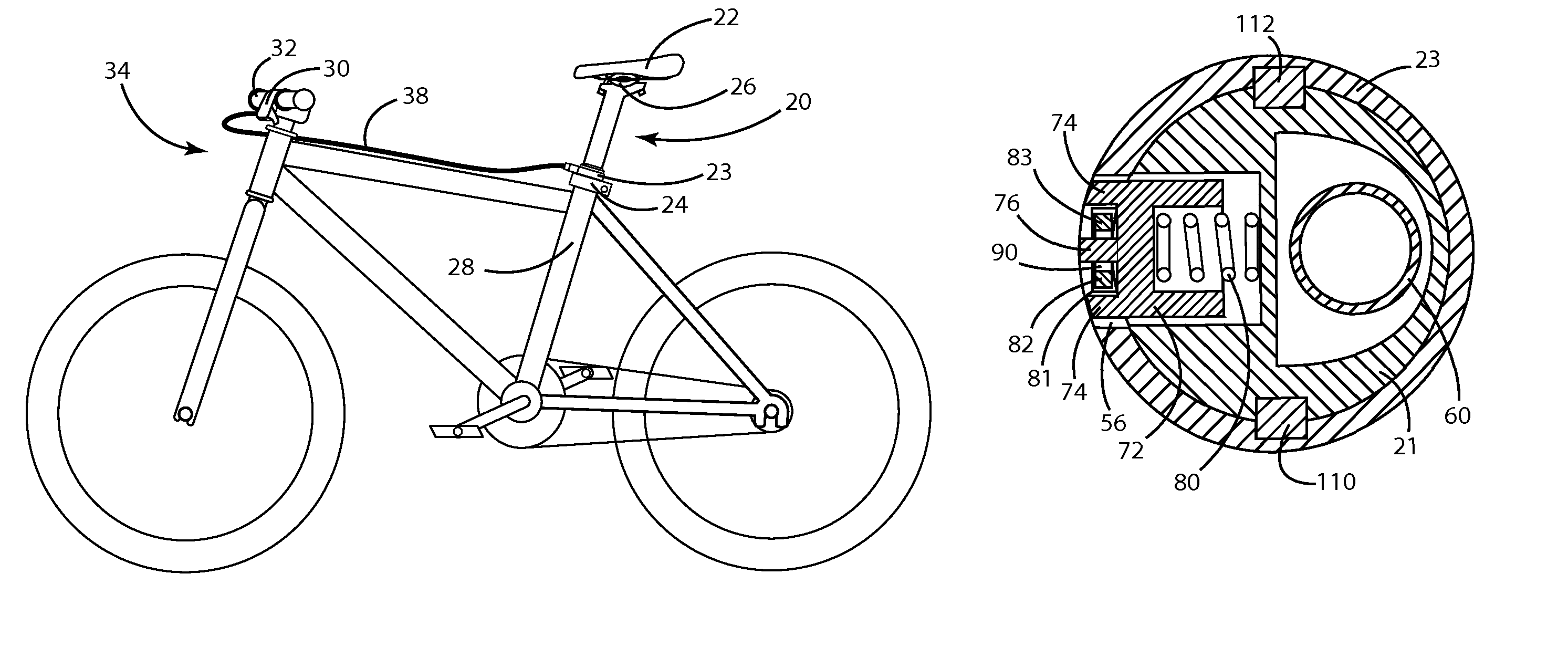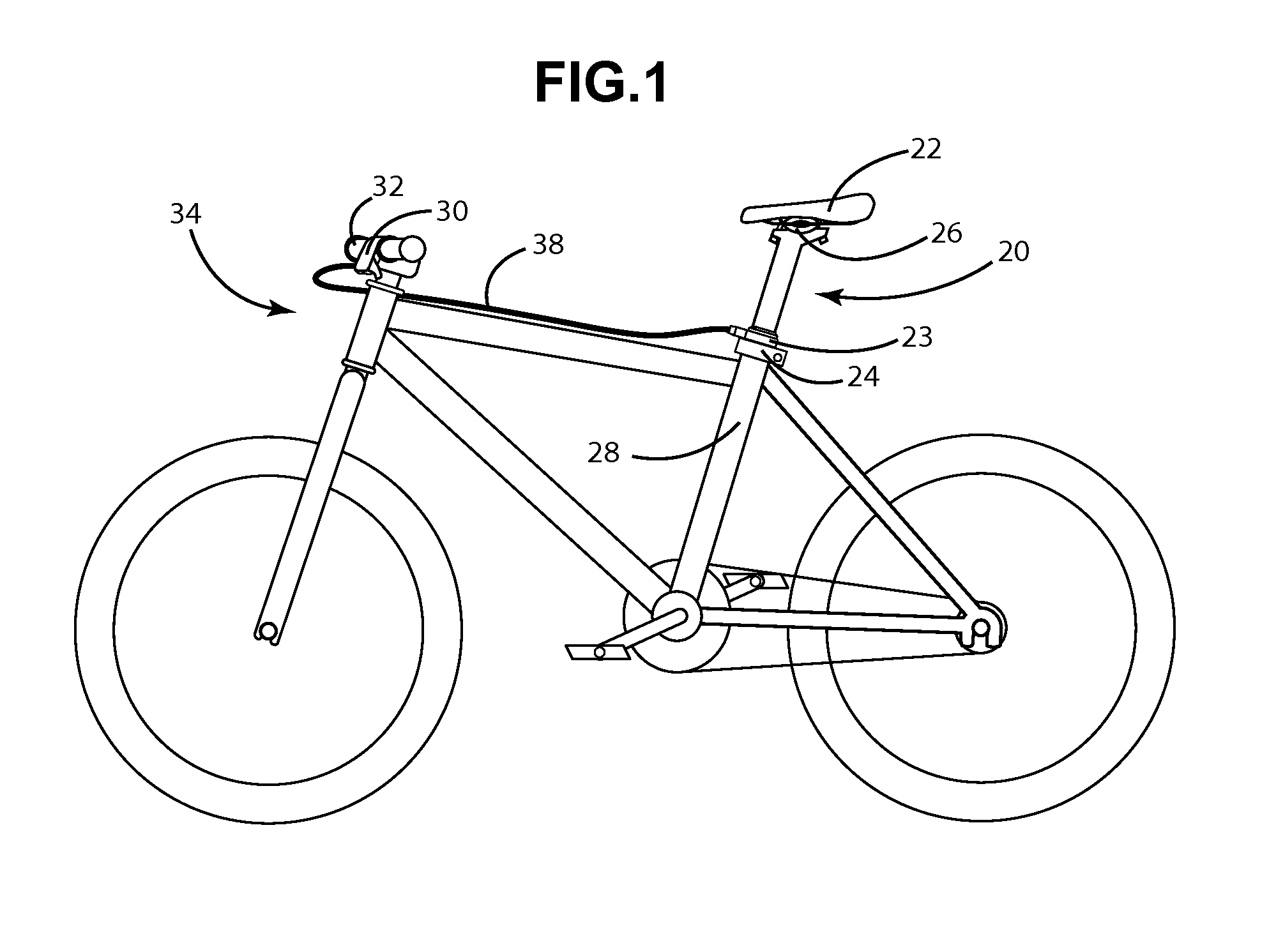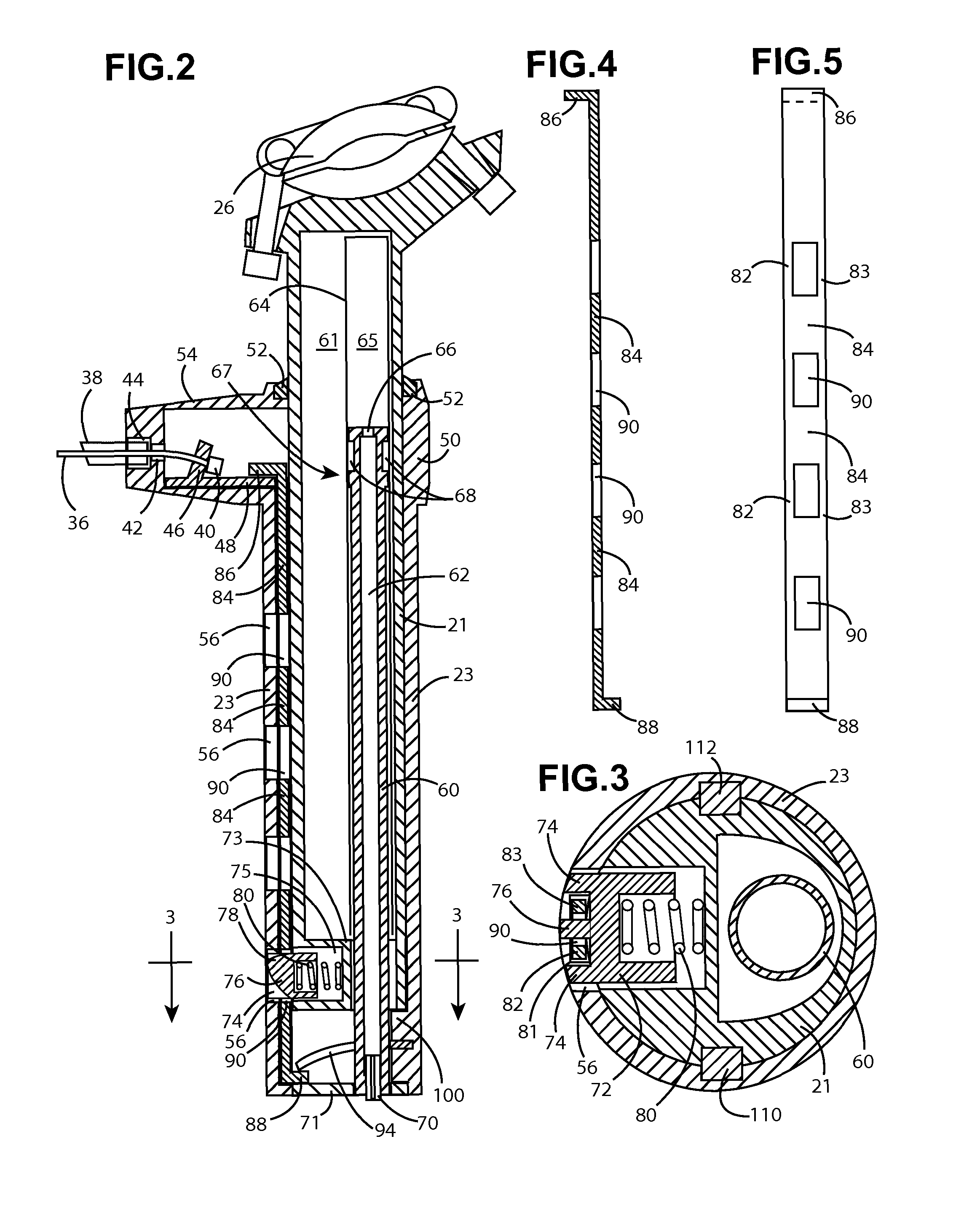Bicycle seat height adjusting assembly
a seat height and assembly technology, applied in the field of seat posts, can solve the problems of limited range, dangerously loose control of cyclists, and most of these designs are not capable of full adjustment, and achieve the effects of not quickly wear out or cause even greater damage to the seat post, high durability, and even spring ra
- Summary
- Abstract
- Description
- Claims
- Application Information
AI Technical Summary
Benefits of technology
Problems solved by technology
Method used
Image
Examples
Embodiment Construction
[0041]Referring now to the embodiment of the invention shown in FIG. 1, a new bicycle seat height adjusting assembly is presented and generally designated by the reference number 20. The seat height adjusting assembly 20 generally comprises a seat post 21 that is positioned within an insert tube 23. The insert tube 23 is shown inserted into the seat tube 28 of a bicycle frame 34. The insert tube 23 retrofits into the bicycle seat tube 28 in the place of a traditional seat post. The seat post 21 is adjustable up and down, being telescopically slidable within the insert tube 23. A cable housing 38 is shown extending outwardly from the upper portion of the insert tube 49. The cable housing is further connected to an actuation lever 15 that is positioned on the bicycle handlebar 32. The seat 22 is clamped to the top portion of the seat post 21 through any conventional clamping method 26. A post clamp 24 is positioned around the seat tube 28 of the bicycle frame 34 for fixedly securing t...
PUM
 Login to View More
Login to View More Abstract
Description
Claims
Application Information
 Login to View More
Login to View More - R&D
- Intellectual Property
- Life Sciences
- Materials
- Tech Scout
- Unparalleled Data Quality
- Higher Quality Content
- 60% Fewer Hallucinations
Browse by: Latest US Patents, China's latest patents, Technical Efficacy Thesaurus, Application Domain, Technology Topic, Popular Technical Reports.
© 2025 PatSnap. All rights reserved.Legal|Privacy policy|Modern Slavery Act Transparency Statement|Sitemap|About US| Contact US: help@patsnap.com



